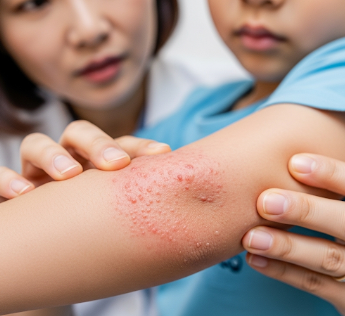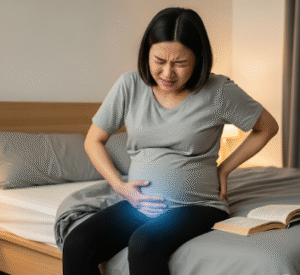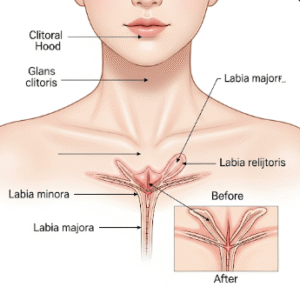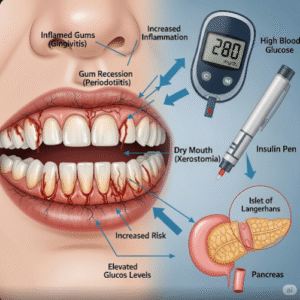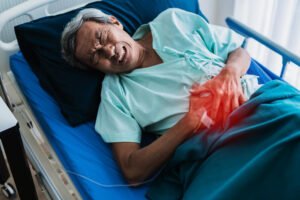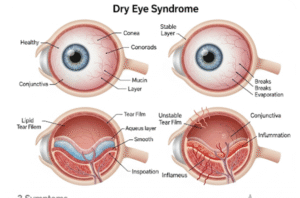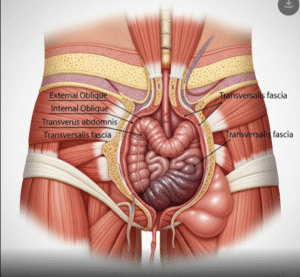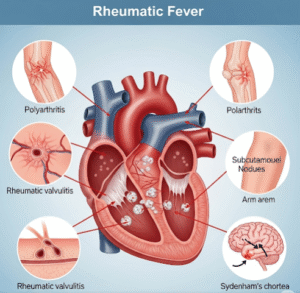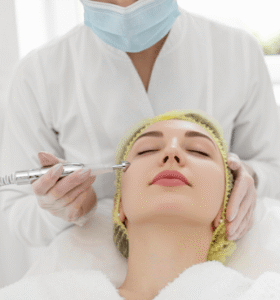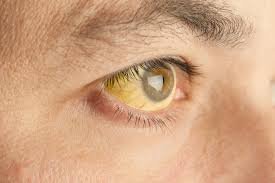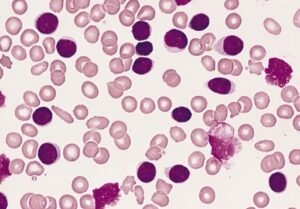Overview
Rashes in babies and children are common and can appear as red spots, bumps, blisters, or patches on the skin. Most rashes are mild and self-limiting, but some may indicate serious infections or allergic reactions.
In Korea, pediatricians and dermatologists frequently evaluate rashes to identify their cause, which may range from viral or bacterial infections to allergic reactions or skin conditions like eczema. Early recognition ensures proper care and reduces complications.
➤ Can be localized or widespread
➤ Often associated with fever, itching, or irritability
➤ May appear due to infection, allergy, or chronic skin conditions
➤ Timely evaluation is important to prevent complications or worsening symptoms
Key Facts
➤ Most pediatric rashes are caused by viral infections (measles, chickenpox, roseola)
➤ Allergic reactions (food, medications, environmental) are a common cause
➤ Some rashes may indicate serious bacterial infections like meningococcemia or scarlet fever
➤ Korea has advanced pediatric dermatology care for diagnosis and treatment of rashes
What Are Rashes in Babies and Children?
A rash is a change in the skin’s color, texture, or appearance. In children, rashes can present as:
- Macules – flat, discolored spots
- Papules – small, raised bumps
- Vesicles or blisters – fluid-filled lesions
- Pustules – pus-filled bumps
- Plaques – raised, solid patches
Rashes may appear suddenly or gradually, be itchy or painless, and may be localized to certain areas or cover the whole body.
What Symptoms Are Related To
Rashes in children often come with other signs that help determine the cause:
➤ Fever or malaise – may indicate infection
➤ Itching or scratching – common in eczema or allergic reactions
➤ Swelling or redness – can indicate inflammation or infection
➤ Blisters or crusts – seen in chickenpox or impetigo
➤ Pain or tenderness – may suggest bacterial infection
➤ Respiratory or gastrointestinal symptoms – can accompany viral exanthems
What Causes / Possible Causes
Common causes of rashes in babies and children include:
Viral Infections
➤ Measles, rubella, roseola, chickenpox, hand-foot-and-mouth disease
➤ Often accompanied by fever, malaise, or respiratory symptoms
Bacterial Infections
➤ Scarlet fever, impetigo, staphylococcal or streptococcal infections
➤ May cause pustules, honey-colored crusts, or systemic symptoms
Allergic Reactions
➤ Food allergies (milk, eggs, nuts)
➤ Medications
➤ Contact dermatitis from soaps, detergents, or clothing
Chronic Skin Conditions
➤ Eczema (atopic dermatitis) – dry, itchy patches
➤ Psoriasis – scaly, red plaques
Other Causes
➤ Heat rash (prickly heat) from sweating
➤ Insect bites
➤ Autoimmune conditions (rare)
When Should I See My Doctor
Seek medical attention promptly if:
➤ Rash is sudden, widespread, or rapidly worsening
➤ High fever, lethargy, or irritability accompanies the rash
➤ Presence of blisters, pus, or bleeding
➤ Rash is painful or associated with breathing difficulties
➤ Rash persists longer than a few days without improvement
➤ History of chronic illness or immune compromise
⚠️ Early evaluation ensures accurate diagnosis and treatment, especially to rule out serious infections.
Care and Treatment
Home Care & Supportive Measures
➤ Keep the skin clean and dry
➤ Use mild, fragrance-free soaps and moisturizers
➤ Dress the child in loose, breathable clothing
➤ Avoid scratching – use mittens or short nails for babies
➤ Keep the child hydrated
Medical Treatments
➤ Antihistamines for itching due to allergies
➤ Topical corticosteroids or moisturizers for eczema
➤ Antibiotics for bacterial infections (if prescribed by a pediatrician)
➤ Antiviral medications in rare severe viral cases
➤ Referral to pediatric dermatology for chronic or unexplained rashes
Treatment Options in Korea
Korean pediatric care centers provide comprehensive services for diagnosing and treating rashes in children:
➤ Diagnostics
➤ Skin examination and dermoscopy
➤ Blood tests for infections, allergies, or immune disorders
➤ Swabs or cultures for bacterial or viral pathogens
➤ Allergy testing (skin prick or IgE)
➤ Treatment Approaches
➤ Prescription topical or systemic medications for infection or inflammation
➤ Phototherapy for chronic skin conditions
➤ Nutritional guidance and avoidance strategies for food allergies
➤ Multidisciplinary care for autoimmune or systemic diseases
➤ Top Hospitals & Clinics in Korea
➤ Seoul National University Children’s Hospital – Pediatric dermatology and allergy care
➤ Asan Medical Center – Comprehensive pediatric infectious disease and dermatology
➤ Samsung Medical Center – Advanced diagnostics and treatment for skin conditions
➤ CHA Bundang Medical Center – Pediatric dermatology and allergy clinics
Final Thoughts
Rashes in babies and children are common but require careful observation. While most are harmless and self-limiting, some may indicate serious infections, allergies, or chronic skin conditions.
In Korea, children benefit from early evaluation, advanced diagnostics, and comprehensive pediatric care, ensuring effective treatment and preventing complications.
If your child develops widespread, persistent, or accompanied by systemic symptoms, consult a pediatrician promptly.

